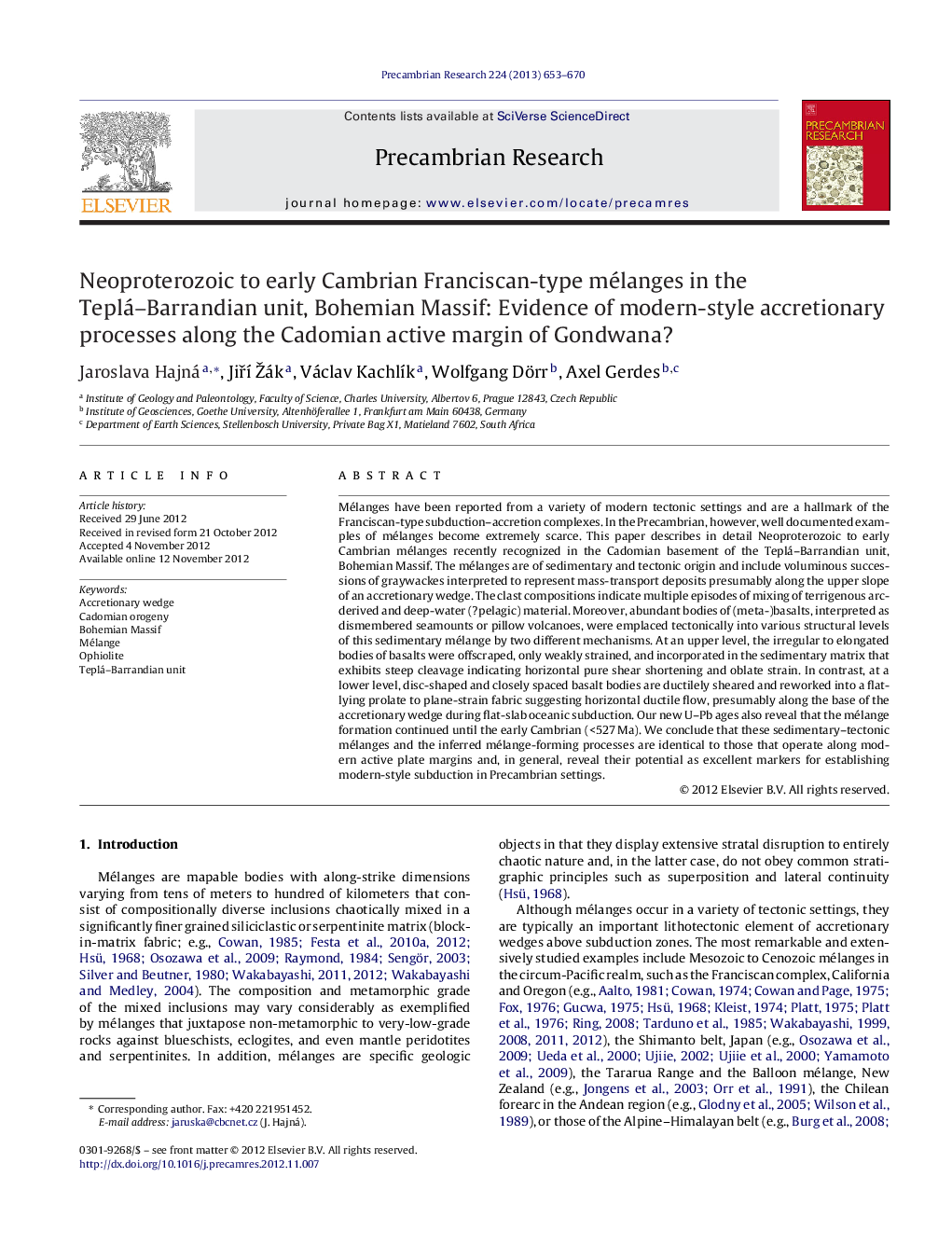| کد مقاله | کد نشریه | سال انتشار | مقاله انگلیسی | نسخه تمام متن |
|---|---|---|---|---|
| 4723368 | 1639650 | 2013 | 18 صفحه PDF | دانلود رایگان |

Mélanges have been reported from a variety of modern tectonic settings and are a hallmark of the Franciscan-type subduction–accretion complexes. In the Precambrian, however, well documented examples of mélanges become extremely scarce. This paper describes in detail Neoproterozoic to early Cambrian mélanges recently recognized in the Cadomian basement of the Teplá–Barrandian unit, Bohemian Massif. The mélanges are of sedimentary and tectonic origin and include voluminous successions of graywackes interpreted to represent mass-transport deposits presumably along the upper slope of an accretionary wedge. The clast compositions indicate multiple episodes of mixing of terrigenous arc-derived and deep-water (?pelagic) material. Moreover, abundant bodies of (meta-)basalts, interpreted as dismembered seamounts or pillow volcanoes, were emplaced tectonically into various structural levels of this sedimentary mélange by two different mechanisms. At an upper level, the irregular to elongated bodies of basalts were offscraped, only weakly strained, and incorporated in the sedimentary matrix that exhibits steep cleavage indicating horizontal pure shear shortening and oblate strain. In contrast, at a lower level, disc-shaped and closely spaced basalt bodies are ductilely sheared and reworked into a flat-lying prolate to plane-strain fabric suggesting horizontal ductile flow, presumably along the base of the accretionary wedge during flat-slab oceanic subduction. Our new U–Pb ages also reveal that the mélange formation continued until the early Cambrian (<527 Ma). We conclude that these sedimentary–tectonic mélanges and the inferred mélange-forming processes are identical to those that operate along modern active plate margins and, in general, reveal their potential as excellent markers for establishing modern-style subduction in Precambrian settings.
Figure optionsDownload as PowerPoint slideHighlights
► Neoproterozoic to early Cambrian mélanges recognized in the Teplá–Barrandian unit.
► The mélanges are of sedimentary and tectonic origin.
► Sedimentary mélanges represent gravity flow deposits atop an accretionary wedge.
► Ocean floor basalts were emplaced tectonically into the sedimentary mélange.
► Mélange-forming processes are identical to those that operate in modern settings.
Journal: Precambrian Research - Volume 224, January 2013, Pages 653–670